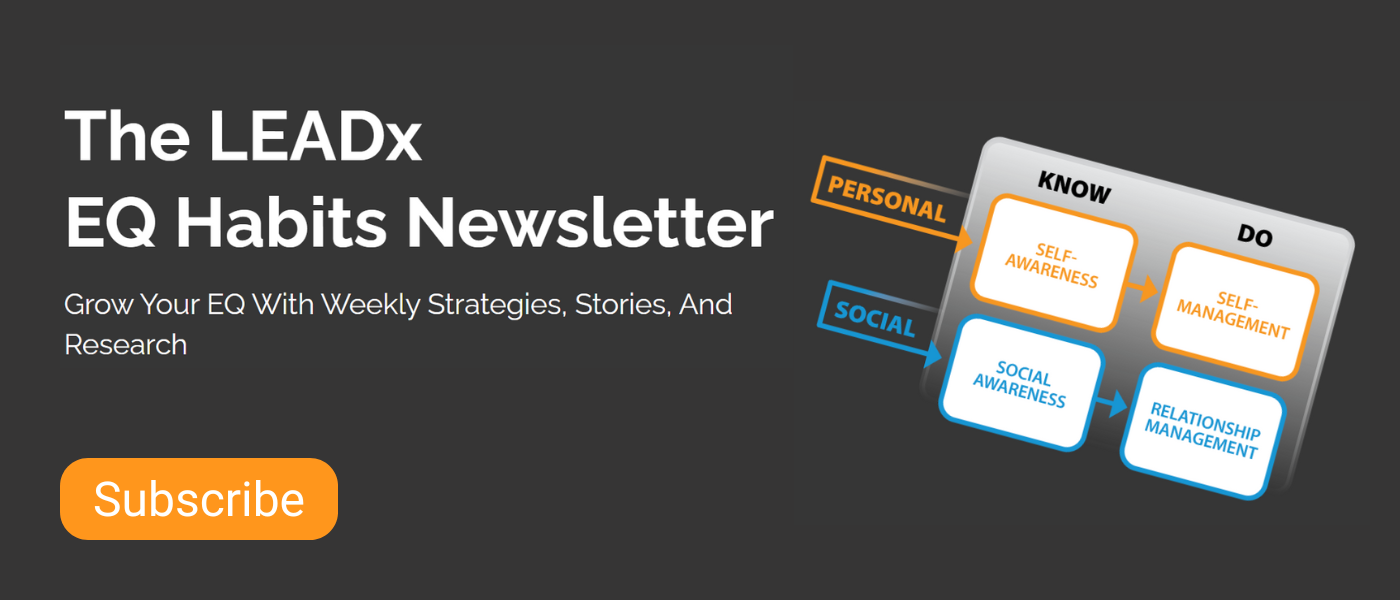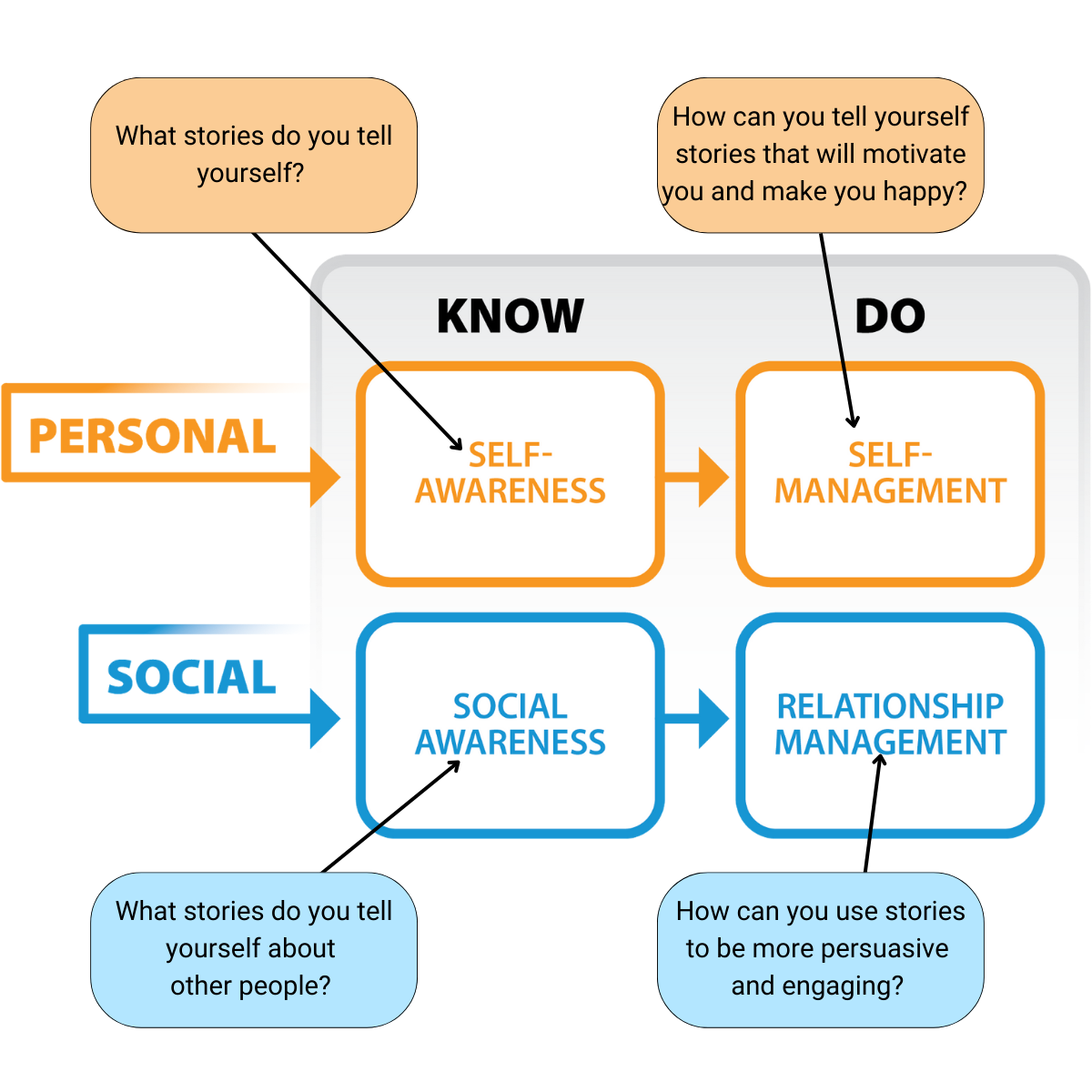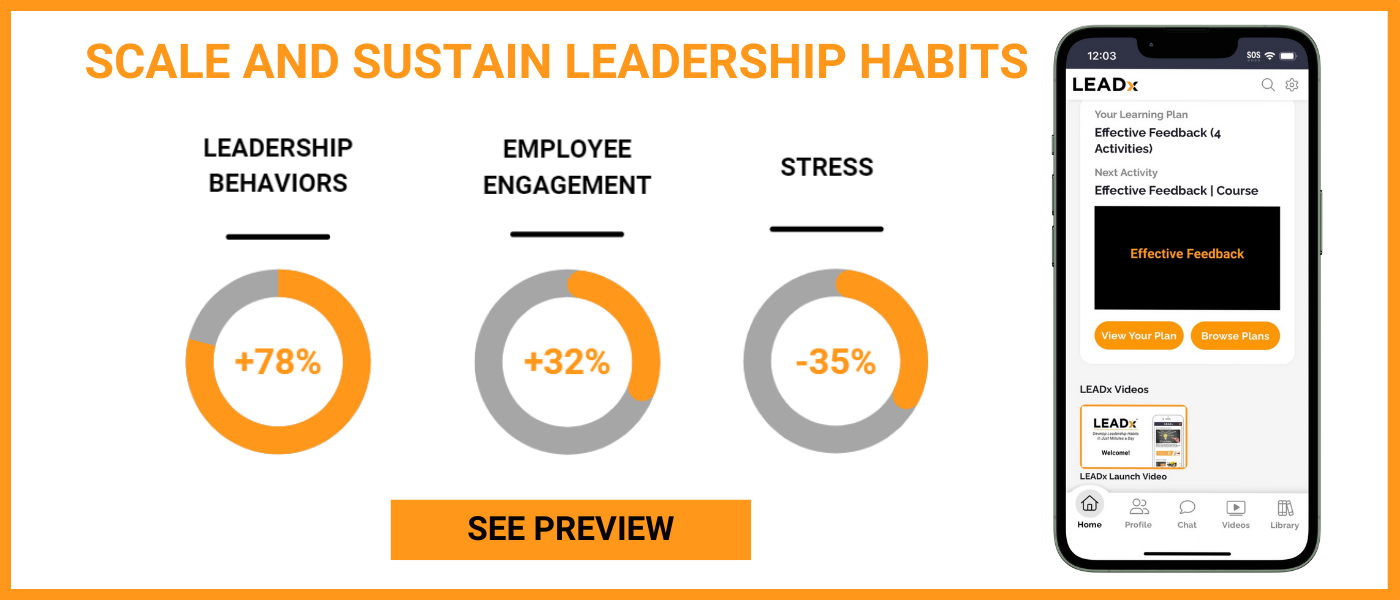
Our brains are so story-driven that we build stories where they don’t exist. In a classic study, a group of people viewed a boring film. Two triangles and a circle moved across the screen. A rectangle remained in place. When asked what they saw, 33 of 34 people spun emotion-centered stories about the shapes.
- The circle was “worried”
- The “little triangle” was an “innocent young thing” (creepy)
- The big triangle was “blinded by rage and frustration”
This bizarre tendency to weave a story out of moving shapes isn’t so bizarre if you think about it. Our brains are hardwired to think and communicate in stories.
 Since we are hardwired to think in stories, the ability to recognize stories and use them to communicate is invaluable. Research links storytelling to being more engaging, being more persuasive, and feeling happier and less stressed.
Since we are hardwired to think in stories, the ability to recognize stories and use them to communicate is invaluable. Research links storytelling to being more engaging, being more persuasive, and feeling happier and less stressed.
So how exactly can you use storytelling to your advantage? Perhaps the most effective way is to think about storytelling as an emotional intelligence (EQ) strategy.
The Link Between Storytelling and EQ
Storytelling impacts each of the four core EQ skills:
Self-Awareness: The stories we tell ourselves shape who we are and what we believe we are capable of.
Self-Management: By reshaping the stories you tell yourself, you can improve your motivation and happiness.
Social Awareness: The stories we tell ourselves about other people can be flawed. To avoid bias, learn to recognize when you’re creating a story based on flimsy data, assumptions, or judgments.
Relationship Management: Be more engaging, communicative, and persuasive by learning to tell a good story.

Self-Awareness: Learn to Recognize and Understand the Stories You Tell Yourself
We constantly build stories about ourselves. These stories affect how we think about ourselves, how we think about others, and how we react to the world around us. Esther Perel, a psychotherapist renowned for her work on human relationships, considers stories to be a telltale sign of a successful therapy session. “People come in with a story. Of why they’re stuck. Of what they think is making it painful. I consider [it] a good session [when someone] comes in with one story and leaves with another,” she explained in a recent interview. “Because when you tell a different story, you open up the possibility for a new experience.”
Recognizing the stories you tell yourself is a huge component of self-awareness. By learning to recognize the stories you tell yourself, and why you tell them, you can boost your self-awareness.
Strategy: Journal about the stories you tell yourself. Calendar out fifteen minutes every Friday for the next month. During those fifteen minutes, answer each of the following questions in a journal:
- What was a challenge I faced this week?
- What story was I telling myself about my ability to handle that challenge?
- How many behaviors can I connect to the story I was telling myself? Name specific examples.
- Can I think of behaviors that tell a different story? Name specific examples.
- Why might I be telling myself this story?
Self-Management: Take Control of Your Self-Talk to Reshape Your Stories
Self-awareness is about recognizing the stories we tell ourselves. Self-management is about reshaping those stories. In an interview with Oprah, psychologist Brene Brown points out how quickly we can begin to tell ourselves harmful stories, especially in a moment of struggle. She says, “We are neurobiologically hardwired to make sense of that fall, to make sense of that hurt, as fast as we can. And if we can come up with a story that makes sense of it, our brain chemically rewards us for that story, whether it’s accurate or not.” The only way to disrupt those harmful stories is to stop and ask yourself, “What story am I telling myself right now?”
One of the best ways to do this is to monitor and rephrase your self-talk. Self-talk is the little phrases or images that you play in your head. Negative self-talk tends to deal in absolutes (“I always” or “I am an idiot”). Learn to catch your negative self-talk and rephrase it to be positive, realistic, and concise.
Here are a few examples:
“I’m not ready.” → “I’m excited to learn and grow.”
“I’m an idiot.” → “I made a mistake and learned from it.”
“I always give bad presentations.” → “I’ve learned a lot about what it takes to give a good presentation.”
Strategy: Practice catching and rephrasing your self-talk. Reflect on and write down an example of negative self-talk. Write down an example that comes up often (ideally daily). Then, use the conditions mentioned previously to write out a positive reframe.
Social Awareness: Learn to Recognize and Understand The Stories You Tell Yourself About Others
Social awareness hinges on the stories we tell ourselves about others. The stories we tell ourselves about other people dictate our ability to empathize with others and understand where they’re coming from. Similar to self-awareness, the best way to build your social awareness is to recognize and understand the stories you tell.
Strategy: Journal about the stories you tell yourself. Calendar out fifteen minutes every Friday for the next month. During those fifteen minutes, answer each of the following questions in a journal:
- What was a story I told myself about __ person this week? Try to choose someone you work with.
- How many behaviors can I connect to the story I was telling myself? Name specific examples.
- Can I think of behaviors that tell a different story? Name specific examples.
- Is my story in any way judgmental? Am I making any assumptions?
- Why might I be telling myself this story?
Relationship Management: Use Stories to Be More Persuasive
Author Stuart Dybek described the power of stories saying, “Why do we tell stories? Because they make us remember.” Since stories are memorable and engaging, they serve as one of the most powerful communication tools at our disposal. Storytelling can help you communicate your ideas in a memorable way. It can help you be more motivating and visionary as a leader. And it can help you be more persuasive and emotionally resonant.
So how do you tell a good story? The key lies in the structure. Nail the structure and you can be sure you’ll keep people engaged and evoke an emotional reaction. And, importantly, the structure can be quite simple.
Strategy: Practice using the “Status Quo,” “Conflict,” “Resolution” framework to craft engaging stories. Here’s an example to use as a template:
Status Quo: Author Mona Awad finishes her first book. It’s a success, and she begins to write her next book.
Conflict: Halfway through, Awad’s agent tells her she doesn’t like the book. Furthermore, she tells Awad that she doesn’t think the book will sell and she won’t represent it. Awad has to choose: 1. She can scrap the book and write something new that her agent will like. 2. She can continue forward with the book, knowing it may not succeed.
Resolution: Awad chooses option two even though she’s afraid to write a book that doesn’t get published. She finds that by letting go of the opinion of her agent, she actually writes better than ever. She’s less restrained and more willing to take creative risks. When she finishes, she finds a new agent, the book becomes a bestseller, and she even sells the movie rights.
Putting These Strategies to Practice
To use our innate storytelling tendencies to your advantage, start implementing each of the strategies in this article. As an added bonus, you’ll be sure to grow your EQ in the process.






